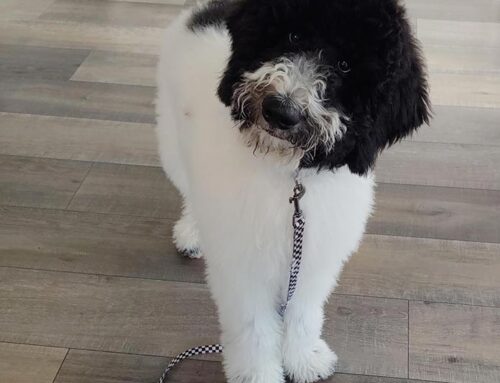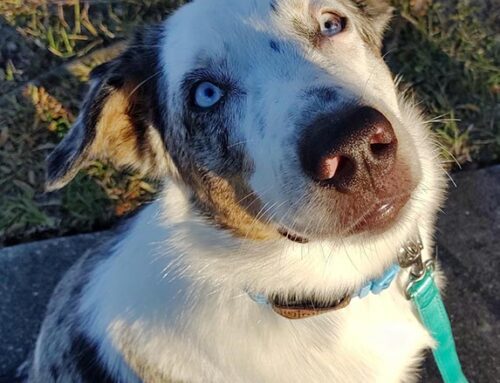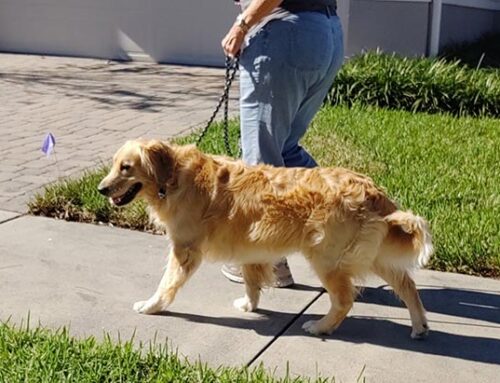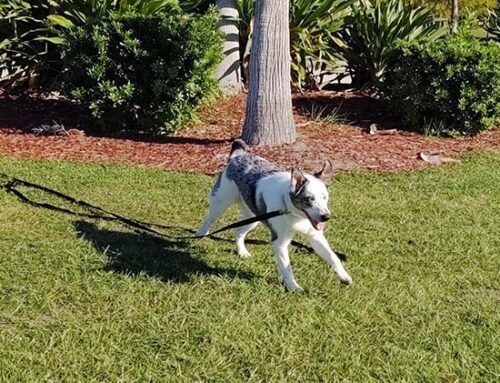 Crate training is an important skill for any dog to have, especially puppies. Here is Kai, a 4-month-old Portugese Water Dog, learning how to behave in the crate. Many people mistakenly think that crate training means putting a puppy in the kennel and closing the door! Then, when the puppy protests, they give up. If the dog’s breeder did not start the litter out with crate training, of course being locked in a box or a cage could be scary for any dog who has never experienced it. Yes, dogs are den animals and, yes, they generally love having their own space. But only once they learn that this is a safe, comfortable place for them. We are teaching Kai to accept his crate as a good place. His meals are served in the crate as well as any edible treats. We are encouraging him to go in, then we are staying close by to reward calm behavior and to redirect or correct anxious behavior. As he gets better and better, the distance from us and the duration of his crate time is increased. It’s not the most fun thing to train, but it is the most necessary. Not only does crate training help with house-breaking and potty training, it also will become necessary any time your dog needs rest, such as after a spay or neuter, or after an injury. In addition, you should always contain any dog under the age of 2 when you can’t be there to observe. Allowing a young dog too much freedom too soon will lead to the puppy learning all kinds of bad behaviors, including chewing your furniture or barking at every sound. It could even cause separation anxiety. Kai’s owners hope to have him at a place of business, so being comfortable in a crate is mandatory. A+, Kai!
Crate training is an important skill for any dog to have, especially puppies. Here is Kai, a 4-month-old Portugese Water Dog, learning how to behave in the crate. Many people mistakenly think that crate training means putting a puppy in the kennel and closing the door! Then, when the puppy protests, they give up. If the dog’s breeder did not start the litter out with crate training, of course being locked in a box or a cage could be scary for any dog who has never experienced it. Yes, dogs are den animals and, yes, they generally love having their own space. But only once they learn that this is a safe, comfortable place for them. We are teaching Kai to accept his crate as a good place. His meals are served in the crate as well as any edible treats. We are encouraging him to go in, then we are staying close by to reward calm behavior and to redirect or correct anxious behavior. As he gets better and better, the distance from us and the duration of his crate time is increased. It’s not the most fun thing to train, but it is the most necessary. Not only does crate training help with house-breaking and potty training, it also will become necessary any time your dog needs rest, such as after a spay or neuter, or after an injury. In addition, you should always contain any dog under the age of 2 when you can’t be there to observe. Allowing a young dog too much freedom too soon will lead to the puppy learning all kinds of bad behaviors, including chewing your furniture or barking at every sound. It could even cause separation anxiety. Kai’s owners hope to have him at a place of business, so being comfortable in a crate is mandatory. A+, Kai!



